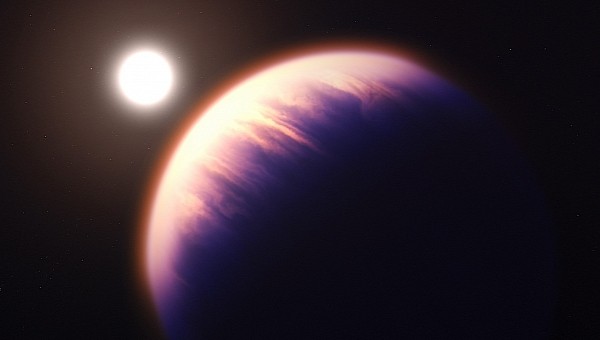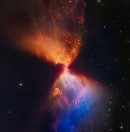When they finally got around to launching the James Webb Space Telescope (JWST), the space agencies involved said it will revolutionize the way we see the Universe and the celestial bodies located in it. And in almost a year of deep space science, they were proven right time and time again.
The latest Webb piece of news involves a distant planet called WASP-39 b. Located 700 light-years away from our own blue marble, in the Virgo constellation, the exoplanet is also called Bocaprins, and was discovered by the WASP project back in 2011.
We already knew a thing or two about the place. NASA describes it as a planet the size of Saturn but orbiting its star eight times closer than Mercury does our Sun. Even so, it shows traces of carbon dioxide, and, most importantly, water in its atmosphere.
Being such an alluring target made scientists point Webb at it as well, and for the first time they got back a “molecular and chemical profile of a distant world’s skies” that includes “a full menu of atoms, molecules, and even signs of active chemistry and clouds.”
The telescope did this by looking at the planet as it passed in front of its star. Chemicals in the atmosphere absorb light differently, and on top of that Webb can see in infrared light, so these two elements allowed scientists to determine what the atmosphere is made of.
One of the most important revelations is that, for the first time in the history of exoplanet atmosphere studies, they found sulfur dioxide, which is produced “from chemical reactions triggered by high-energy light from the planet’s parent star,” just like the ozone layer is born here on Earth. Sodium, potassium, and water vapor were also detected.
People here on Earth will continue to look at WASP-39 b as they’ll try to study “the effects of radiation from host stars on exoplanets.” So far, no signs of alien life have been detected there (or elsewhere, for that matter).
We already knew a thing or two about the place. NASA describes it as a planet the size of Saturn but orbiting its star eight times closer than Mercury does our Sun. Even so, it shows traces of carbon dioxide, and, most importantly, water in its atmosphere.
Being such an alluring target made scientists point Webb at it as well, and for the first time they got back a “molecular and chemical profile of a distant world’s skies” that includes “a full menu of atoms, molecules, and even signs of active chemistry and clouds.”
The telescope did this by looking at the planet as it passed in front of its star. Chemicals in the atmosphere absorb light differently, and on top of that Webb can see in infrared light, so these two elements allowed scientists to determine what the atmosphere is made of.
One of the most important revelations is that, for the first time in the history of exoplanet atmosphere studies, they found sulfur dioxide, which is produced “from chemical reactions triggered by high-energy light from the planet’s parent star,” just like the ozone layer is born here on Earth. Sodium, potassium, and water vapor were also detected.
People here on Earth will continue to look at WASP-39 b as they’ll try to study “the effects of radiation from host stars on exoplanets.” So far, no signs of alien life have been detected there (or elsewhere, for that matter).









